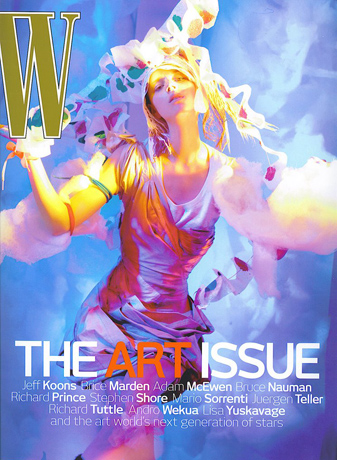Electricity. A spark. A pulse. A presence that has been consistent in maintaining an identity in music for quite some time. Adding this pre-fix to genres of music i.e. (electro-pop, electro-rock) can almost be seen as an injustice... for Electro has all the capabilities of standing on its own. The hybridity between electro and other genres is essentially what induces an inflammatory reception in the senses. An electric-feel per say (to borrow from MGMT).
I started thinking of this post in terms of what first comes to mind when I think of electronic music. I first thought geographically, and mostly associated the genre with Europe. Then I started to think of the music I am listening to these days, and I realized most of the stuff I am really digging is one form of electro or another. Either electro pop, electro-synth-pop, electro indie-rock, etc etc etc….Even Wikipedia has a very extensive list of the different sub-genres which you can check out here:
So, in terms of a breakdown here are some interesting sub-genres that I think are worth looking at:
The resurgence of the DJ: (EURO style)
Tiesto
Armin Van Buren
David Guetta
Paul Van Dyk
Ferry Corsten
Electro-pop (UK style)

La Roux
is an English electropop duo band whose music is influenced by 1980s synthpop including Yazoo, Depeche Mode, The Human League, Heaven 17, and Blancmange. I got to see them live this summer in Los Angeles and they really had that element that literally put a jolt of electricity through the crowd. The playful melodies in songs such as "I'm Not Your Toy" and "Tigerlily" re-charged the initially dull audience into replicas of the energizer bunny.
Little Boots
is an English electropop musician who sings and plays the keyboard, piano, stylophone and a Japanese electronic instrument, called Tenori-on is definitely putting her stamp on the electro-pop movement. Check out her songs "Stuck on Repeat" and "New in Town"
and across the Pond...

In Lady GaGa’s new album The Fame Mons†er: a new, monstrous side of GaGa is shown. A side that can be attributed to the European Electro-Industrial vibe present in her songs such as "Dance in the Dark". This new eerie and metallic sound substantiates her equally eerie lyrics that allude to other highly respected artists such as Plath and Kubrick. The album’s high-voltage delivers and liberates the listener. An escape to a filthy over-sized 'warehouse' somewhere in Eastern Europe, echoing with the sharp current of electricity.
Down Under

Sneaky Sound System
are very well received in the dance scene, and some of their stuff has been remixed by Tiesto making for an interesting sound:
Cut Copy
is a synthpop band from Melbourne, Australia. Their sound, often labeled as electropop, draws considerable influence from 80s new wave, synth-pop and post-punk genres.
Ladyhawke
all of her music is very nostalgic of the 1980s, (her name is a riff on the movie of that decade), but her music featuring PNAU is especially noteworthy.
Rock fusion
MGMT
"We weren't trying to start a band," remarked Goldwasser. "We were just hanging out, showing each other music that we liked." They experimented with noise rock and electronica before settling on what David Marchese of Spin calls "their current brand of shape-shifting psychedelic pop."
Phoenix

An interesting thing about Phoenix (who I think are one of the best indie rock outfits on the scene today): In early 2009, it was announced that the band was returning with a new album titled Wolfgang Amadeus Phoenix, which was released on May 25, 2009. The album was recorded in Paris by Cassius's Philippe Zdar who co-produced and mixed the album. Cassius is a French house music duo consisting of producers Philippe Cerboneschi and Hubert Blanc-Francard, better known as Philippe Zdar and Boom Bass. You can definitely hear the house influence on Phoenix's new record (especially in Fences, Girlfriend, and Armistice) which I think makes for an amazing one, and the technique in the recording is phenomenal.
Experimental (goes Canadian)
Crystal Castles

is an experimental electronic music band from the province of Ontario consisting of producer Ethan Kath and vocalist Alice Glass. Crystal Castles are known for their chaotic live shows and their low-fi melancholic home productions. To listen to Crystal Castles "is to be cast adrift in a vortex of deafening pain without a safety net. You get the feeling you could do anything in the world, but that that "anything" would ultimately mean nothing. Crystal Castles marks a nuanced emotional territory that dance music never covered before." (BBC).
MSTRKRFT
is an electronic music group from Toronto. MSTRKRFT (pronounced Master Kraft) have been commissioned to remix songs by such artists as Justice, Bloc Party, Metric, Wolfmother, and Annie and The Kills...and you have probably heard Heartbreaker featuring John Legend, one of their singles:
These are just some of my favorites, and hopefully are illustrative of how influential electronic music is across the board...perhaps it is THE postmodern musical genre of our time, and can be counted on for constantly mixing and remixing (quite literally) the music scene for our enjoyment and paving the way for more groundbreaking sounds to come...
PS... I also love this Felix Da Housecat Remix of the Nina Simone song "Sinnerman" which is now being featured in the new HTC mobile phone commercial you have probably seen on TV in the past couple of weeks...














































